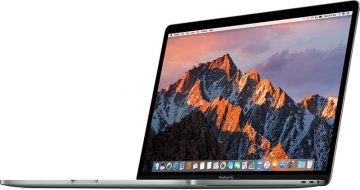Seven Types of Data Breaches in 2018: Phishing, Malware and Others

What is the first thing you think about when you think “data breach?” Maybe you immediately imagine someone using malware to invade your virtual privacy and steal personal information? Although that is, in large part, how most data breaches occur, that is not the only threat that exists. Malware experts list 7 main types of data breaches that users need to beware of in 2018. We emphasize that this list was created while looking at the current tendencies, and it is always possible that virtual schemers and cyber attackers could come up with new ways to assault unsuspecting users. The greatest impendence that comes from the world of cybercriminals is that they are capable of adapting and shifting without any warning. Therefore, while we recommend taking the information presented in this report seriously, you also need to keep in mind that other security issues might come into existence at any point.
Table of Contents
Why are cybercriminals interested in personal data?
Research shows that an average user has 7 social media accounts. Instagram, Facebook, Twitter, and Snapchat are among some of the most popular social networking platforms in the world, and there are over 3 billion active social network users worldwide. They disclose full names, birth dates, contact information, and share personal photos, videos, and other kinds of private content. Often, they do it publicly. Many users are completely clueless when it comes to cyber crimes created around and targeted at publicly available information, but most believe that nothing bad would happen to them. After all, who cares about me and where I’ve been on holiday with my family. If this is the kind of thought that has crossed your mind, you might be at risk. Ultimately, you should NEVER make private information publicly available because it could be used in many ways. In the worst case scenario, you could become the victim of the next data breach in 2018.
If cybercriminals manage to perform identity theft successfully, they can move on to other scams. For example, if you accidentally disclose or share credit card information (we talk about how this could happen further in the report), schemers could pair this information along with your full name and other kinds of personal data to commit credit card fraud. More recently, virtual security experts have also been observing the new trend of healthcare-related information breaches. According to Popular Science, attackers have been found forging expensive drug prescriptions using private medical data of patients. Here are 10 tips that can help you protect this kind of data. All in all, it is clear that cyber attackers are not trying to obtain private data just for fun. Instead, they are doing it with a clear purpose, which, usually, entails making a profit.
The types of data breaches in 2018 you need to be most cautious about
1. MALWARE
Have you ever skipped or postponed an update for your computer or mobile device? If you have, a serious security vulnerability could exist, and you could become a victim of private data breach in 2018. Cyber attackers are constantly on a lookout for new vulnerabilities so that they could exploit them. If cybercriminals find a way in, they can employ different kinds of malware that could obtain sensitive information. For example, a keylogger is the kind of infection that can silently record mouse clicks and capture screenshots to gather information. Trojans, spyware, and intrusive HTTP cookies can be used in the same way, as well as many other kinds of ways.
2. PHISHING
Fake security alerts – which could be introduced to users by malware as well – online tech-support scams, and bogus email messages can be employed to trick the victim into disclosing private information. For example, attackers can impersonate banks and send fictitious message to trick gullible users into clicking on corrupted links and disclosing credit card data. Fake online surveys, prize sweepstakes, and online subscription or sign-in forms can be utilized to gather sensitive data too. This might include full names, email addresses, telephone numbers, gender, age, and similar data. Although this kind of information might appear to be irrelevant at times, if cyber attackers obtain more sensitive data (e.g., the credit card number), identity theft could be on its way.
3. SKIMMING
A skimming device is built to swipe credit card information embedded within the magnetic strip when the victim uses the card. Such devices can be employed by fake vendors and built into ATMs. Although it might be extremely difficult to notice skimmers at times, in most cases, users should be able to notice signs of physical tampering with the machine. If you are about to use an ATM or a card reader, look for any scratches or unusual marks and physically touch the machine to check if it is not loose anywhere. If you are suspicious, warn the bank or a shop owner so that they could investigate further.
4. ADMINISTRATOR ACCESS
If a website or server is not protected reliably, it could become a target of cyber attackers too. Poor security practices can lead to major data breaches in those cases where websites and servers are used to store personal information. In most cases, such information is encrypted and protected in other ways, but, sometimes, security exploits and successful brute-force attacks enable cyber attackers to gain access to sensitive files. Besides that, if a remote attacker gains administrative privileges to a website, they can load malicious code, and then every visitor of that website could fall at risk of letting in keyloggers or facing identity theft-related scams.
5. PHYSICAL ACCESS
Users still use external drives to store personal data, and they still choose to write down sensitive information in unprotected text files. Besides the risk of malware slithering in and stealing unprotected information, you also have to think about the risk of unauthorized physical access. If your USB drive, laptop, or mobile device is stolen, the data stored within could fall into danger. It goes without saying that you should always take care of your belongings to protect them against physical theft. However, you also have to make sure that data is protected even if devices storing it get stolen or lost.
6. HUMAN ERROR
Or human turpitude? Human error is unavoidable, and, as we discussed earlier, it takes one skipped update to fall under the radar of cyber attackers. Unfortunately, not everyone is competent to keep data safe even with the best intentions, which is why it is important to share data only with reputable and reliable service providers. Business owners and website administrators also need to be cautious about who can access sensitive data to avoid unnecessary risks. It is important to notice that those closest to us are most likely to have direct access to sensitive information, which is why staying vigilant is important at all times.
7. PASSWORD ATTACKS
Why fish for bits of information when you can take over the entire online identity of a user with one piece of data – the password. Cyber attackers use software that allows them to guess passwords and obtain access to users’ accounts. These are known as brute-force attacks, and weak passwords are the main target. While it may take moments to guess a password like password123, it would take ages to guess a truly complicated one and breach data. Of course, users often go for easy-to-remember passwords because of the sheer volume of accounts they have. In the worst case, they also recycle passwords and use the same ones over and over again. Instead of doing that, employing a password manager and using a reliable password generator is recommended.
How to protect yourself against data breaches in 2018?
One of the biggest data breaches in history was revealed just a year ago (July 2017) when personal information of 147.9 million Equifax users was leaked due to an application vulnerability. Credit card information was leaked in the process, which put millions of users at risk of credit card fraud. This year, we have learned about the Cambridge Analytica and Facebook data breach scandal, and although it did not happen in 2018 per se, there are plenty of examples where such big-name companies as Adidas, Sears, and Yahoo have been linked to biggest data breaches of 2018. Clearly, cyber criminals are often smarter and quicker to find vulnerabilities than the people who are responsible for protecting the companies and their customers’ data. Although there is nothing these customers can do about the security measures taken by the companies, there are things everyone can do to strengthen their virtual security. Continue reading here, to learn more.








